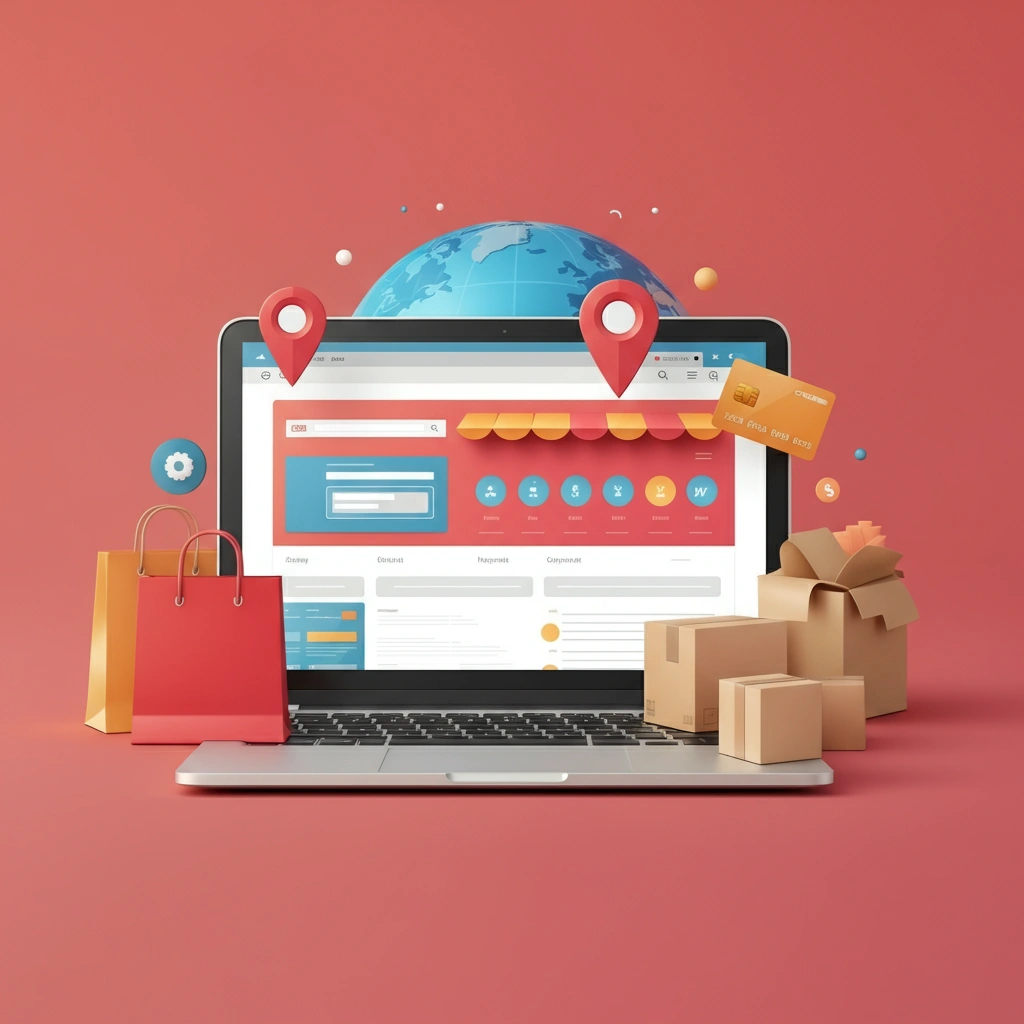How to Start Your Own Online Store from Abroad
How to Start Your Own Online Store from Abroad
Starting your own online store is an exciting venture, even if you're living abroad. Whether you're looking to monetize a passion, build a side hustle, or create a thriving business, the possibilities are endless. While distance may bring a few challenges, modern technology makes it more manageable than ever. Here’s your step-by-step guide to starting an online store from abroad.
Why Start an Online Store?
An online store offers flexibility, independence, and the privilege of managing a business without a fixed geographical location. Whether you're an expat, digital nomad, or simply living outside of your home country, eCommerce allows you to reach a global audience. And the best part? It doesn't require extensive expertise to begin!
Key Benefits:
Low Startup Costs
Compared to renting a physical storefront, setting up an online store is much more affordable. Many platforms, such as Shopify or WooCommerce, allow you to get started for a minimal fee.Global Reach
With an online store, you can cater to customers across the globe, capitalizing on international markets.Flexibility
You can run your business from anywhere, whether you're working from a sunny beach or a crowded café in a foreign city.
Step 1. Choose a Niche
The first step to setting up an online store is deciding what you’ll sell. Your niche determines your target audience, product offerings, and brand positioning. It’s important to choose something that feels meaningful to you while also considering market viability.
Tips for Selecting Your Niche:
Follow Your Passion
If you love baking, consider selling boutique baking supplies. If you're into fitness, explore workout gear or supplements.Research Demand
Use tools like Google Trends or Amazon's best-seller lists to identify trending categories.Analyze the Competition
Investigate what similar businesses in your niche are offering. Can you add unique value or approach your products differently?
Common Niche Examples:
- Handmade jewelry
- Eco-friendly products
- Digital art and templates
- Subscription boxes
Step 2. Choose Your Platform
Your eCommerce platform is the backbone of your business. It’s where your store will live, process transactions, and link to your marketing tools. Platforms like Shopify, WooCommerce, or Wix are user-friendly and designed for beginners.
Things to Consider:
Cost
Shopify, for instance, starts at $29 per month, while WooCommerce is a free plugin for WordPress (though other costs like hosting will come into play).Ease of Use
If you're not tech-savvy, choose options that offer drag-and-drop tools or templates to simplify the store-building process.International Features
Platforms like Shopify allow multi-currency payment options, language settings, and tax calculation for global customers.
Step 3. Build and Design Your Website
Your website is the virtual storefront of your business. A professional, attractive website not only builds customer trust but also encourages sales. Invest some time in creating a strong first impression!
Essentials for Your Website:
User-Friendly Navigation
Ensure customers can easily browse by category, find product descriptions, and add items to their cart.Mobile Responsiveness
Most web traffic comes from mobile devices, so make sure your store looks great on phones and tablets.Essential Pages
Include clear pages like About Us, Contact, FAQ, and Returns/Shipping policies. Customers want to see transparency and professionalism.
Internal Tip: Refer to this FAQ guide for inspiration on crafting clarity-filled policies.
Tools to Use:
- Canva
For creating professional-looking graphics or banners. - Placeit
Ideal for product mockups and branding resources.
Step 4. Set Up Payment Gateways
Once your store is live, you need to enable secure and reliable payment options for a smooth customer experience. Living abroad may complicate setting up a payment gateway, but the following platforms are highly effective internationally:
- PayPal
Widely trusted and simple to configure. - Stripe
Accepts card payments globally. - Wise
(Formerly TransferWise) for international transactions with minimal currency conversion fees.
Ensure your payment platform complies with both your home country’s and your current country’s tax regulations.
Step 5. Handle Logistics & Shipping
A key challenge when managing an online store abroad is logistics. You’ll need a clear plan, especially for shipping and inventory management.
Inventory Options:
Dropshipping
A popular choice for international entrepreneurs, dropshipping involves selling products without keeping physical stock. Your supplier handles shipping directly to customers. Platforms like Oberlo are perfect for dropshipping beginners.Local Suppliers
If you're manufacturing products yourself, establish a reliable shipping carrier in your region. Companies like DHL or FedEx excel at handling international eCommerce deliveries.Warehousing Partners
Use fulfillment services like Amazon FBA (Fulfilled By Amazon) or ShipBob to store and ship your products.
Step 6. Create a Marketing Strategy
Your online store won't succeed if no one knows it exists! Marketing is critical to driving traffic and increasing awareness about your products.
Marketing Channels to Consider:
Social Media Marketing
Platforms like Instagram, TikTok, or Pinterest are goldmines for engaging potential customers. Share behind-the-scenes content, product tutorials, and testimonials.SEO (Search Engine Optimization)
Optimize your product and category pages with keywords to improve visibility on Google.
Pro tip: Tools like Ahrefs can help you find high-traffic keywords.Email Marketing
Build an email list to share updates, offer discounts, or highlight new arrivals.Paid Advertising
Invest in ads on platforms like Google, Facebook, or Instagram. They allow precise targeting, ensuring your products reach the right audience.
Step 7. Manage Taxes and Legalities
Since you're living abroad, taxes and legalities may seem daunting, but with proper planning, they’re manageable.
What to Keep in Mind:
Research Tax Obligations
Depending on your country, you may need to pay VAT, sales tax, or import/export fees. Consult with a tax advisor who specializes in digital businesses.Consider Business Registration
Some countries require online stores to register as a business entity before operating. Look into options for your current location.
External Resource: Visit LegalZoom for helpful legal advice tailored to small businesses.
Step 8. Measure and Improve
Once your store is live, make it a habit to monitor key metrics like website traffic, conversion rates, and customer feedback. Use tools like Google Analytics or Shopify analytics to keep track of your performance.
Overcoming Challenges as an Expat Entrepreneur
Living abroad while managing your online store may present unique hurdles, but with preparation, you can overcome them:
- Time Zones: Automate customer service responses or hire virtual assistants in different time zones to help with inquiries.
- Language Barriers: Offer multilingual website options if selling to customers in regions with different languages.
- Community: Join Facebook groups, expat forums, or LinkedIn communities for entrepreneurial support.
Final Words of Encouragement
Running an online store while living abroad is an incredible opportunity to combine passion and profit, all from wherever life takes you. Don't wait for the "perfect" conditions to start. Begin small, adapt as you learn, and watch your store flourish.
Call-to-Action
Now is your time to take charge of your entrepreneurial dreams. Start your online store today and turn your vision into reality. Need help getting started? Visit our resources page for tools, guides, and inspiring success stories. The world of eCommerce is waiting for you!

 French
French
 Arabic
Arabic
 English
English



